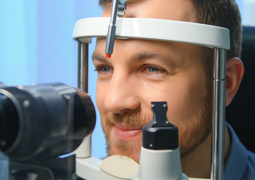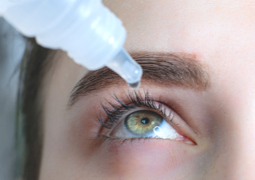It’s no secret that people are spending more and more time on digital devices. After all, we’re very much a plugged-in society. But how does all this screen time affect our eye health? Does it have an effect at all?
Unfortunately, yes, it does. Aside from the constant exposure to blue light, physically staring at a screen for the majority of the day fatigues our eyes. Eye strain (or eye fatigue), technically known as asthenopia, can be caused by the prolonged use of digital devices. This type of eye fatigue is known as digital eye strain, or computer vision syndrome.
Digital Eye Strain: A Quick Overview
What, exactly, is digital eye strain? In a nutshell, digital eye strain is the physical discomfort that comes from the continuous use of a digital device for two hours or more. Digital devices include TVs, desktops, laptops, smartphones, e-readers, tablets, gaming systems, and any other device that has a digital screen. Digital eye strain is especially noticeable when using more than one device simultaneously, or when switching from one device to another (for example, going from a laptop to a smartphone).
Images and printed text on screens are small and constantly moving. Having to react to these continuous changes requires a lot of effort from eye muscles. On top of that, our eyes weren’t built to look at things that are so close for so long. All of this together can fatigue our eyes.
Symptoms of Digital Eye Strain
Symptoms of digital eye strain include:
- dry, irritated eyes
- blurred or double vision
- sore or tired eyes
- difficulty focusing
- increased light sensitivity
- headaches
- pain in neck, shoulders, or back
Most symptoms of digital eye strain are temporary, but it’s possible to have longer lasting effects, such as continued blurry vision, after you’ve stopped using your digital device. Simultaneous use of two or more devices can also exacerbate symptoms. And even though symptoms are temporary, they will continue to recur and/or worsen over time.
Most symptoms of digital eye strain are temporary, but it’s possible to have longer lasting effects, such as continued blurry vision, after you’ve stopped using your digital device.
Causes of Digital Eye Strain
Digital eye strain can be caused by:
- extended use of digital devices
- being in a room with bright light or screen glare
- long periods of continuous high focus and concentration
- straining to see in very dim light
- uncorrected vision problems can contribute to eye strain
- eye strain can be worse in adults who wear prescription glasses or contacts, since corrective eye wear isn’t intended for mid-distance viewing
Digital eye strain is becoming more commonplace, so it’s important to recognize the symptoms. This way, you can start to alleviate symptoms before they worsen.
Lessening Digital Eye Strain
While total screen avoidance would be best, it’s an almost impossible expectation. However, it is possible to lessen the effects of digital eye strain. The best way to limit the effects of digital eye strain would be to limit screen time, though this isn’t always possible.
Aside from limiting screen time, other ways to lessen the effects of digital eye strain are:
- proper position, distance, and angle of screens: try to position your screen about an arm’s length away, at about 20º below eye level
- reduce screen glare whenever possible
- don’t have a screen that’s too bright for your surroundings
- increase text size
- use the 20-20-20 rule: every 20 minutes, look at something 20 feet away for 20 seconds
- consider using computer glasses
- remember to blink: we blink much less often when we’re using digital devices
It’s also important to go for regular eye exams. Your optometrist can help monitor and treat any possible eye health issues. If you have any discomfort and you think it may be from digital eye strain, speak with your optometrist at your next appointment. Digital eye strain may also contribute to eye health issues such as age-related macular degeneration, so it’s important to try to lessen its effects before symptoms can get worse.
If you do have digital eye strain, your optometrist can discuss treatment options.
——–
References



























